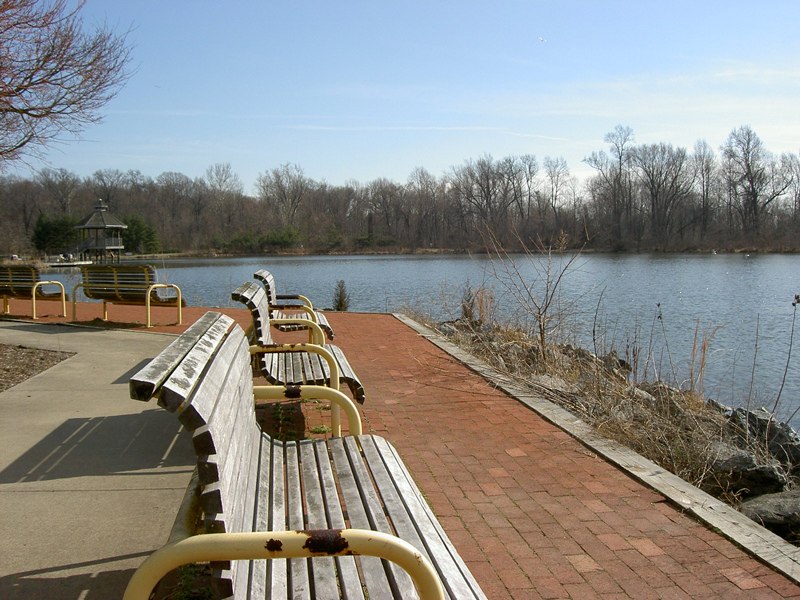
Chilly benches at Lake Artemesia.
This past week I visited Lake Artemesia two more times, hoping to see new ducks or early migrants. My other objective was to determine the quickest and least expensive way of getting to the lake by foot, using public transportation. The quickest way is to take the metro one stop, which involves 2 miles of walking round-trip not including any walking around the lake itself. The least expensive way is definitely to ride the University of Maryland buses, although one of them requires an ID, so it’s not a solution if I wanted to bring friends. This approach takes longer but cuts the travel walking distance in half, as I can pick up the bus one block from my house rather than going the 1/2 mile to the metro. And, it has the added advantage of not costing anything, which is a not-insignificant consideration.
At any rate, the main point was to see new birds and I got lucky on the second trip when I saw a small group of Redheads hanging around in one corner of the smaller body of water. These are common around the Chesapeake Bay, but completely new to me. All the other more common birds I’d seen were still hanging about: Canada Geese, Ring-necked Ducks, Ruddy Ducks, the lone Horned Grebe, and loads of Red-winged Blackbirds, Carolina Wrens, and Song Sparrows. The pair of Killdeer was still chasing each other around on the lawn; I didn’t see the Bluebirds but I remain hopeful for the summer. Late in the visit I noticed a pair of Hooded Mergansers in with the geese; I’d seen a male in Ontario, but the female was new. They were cute, with the male flapping his wings and raising and lowering his crown while the female casually dove for food and pretty much ignored him.
Speaking of mating birds, earlier this week I got flashed by a Ruby-crowned Kinglet as well! We were down along the Potomac by the FDR memorial and the bridge back to the Jefferson, trying to determine if any of the Lesser Scaup were Greater Scaup, and I saw it in the tree. I was able to track it with the binoculars, and had determined that it was most likely to be a Ruby-crowned by process of elimination when I saw the telltale flash of red. That was a treat, and made me laugh at myself only a year ago returning home and reporting that I’d seen a little warbler that seemed to have been marked with orange paint on its head; could that have been for tracking purposes? I solved the mystery of the Ruby-crowned Kinglets not long after that first day, but I still chuckle to think of it. What a difference one year makes!